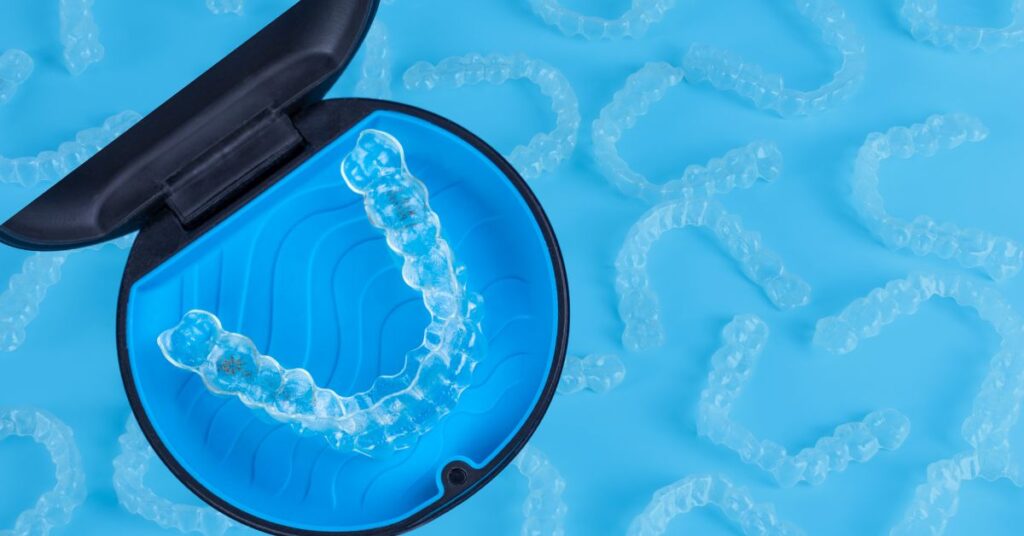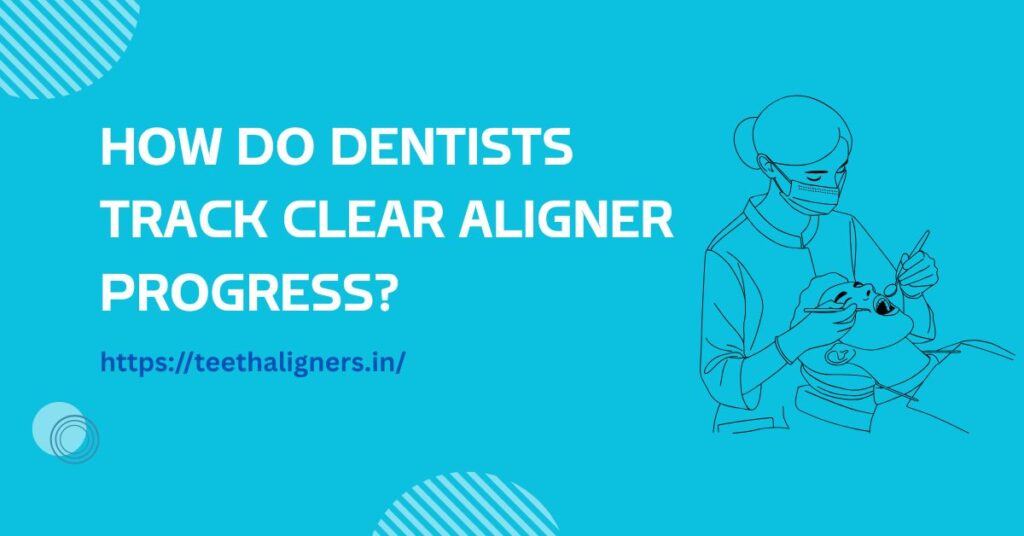Have you ever wondered how dentists make sure your aligner treatment is moving in the right direction? Many people assume that once they receive their trays, everything just works automatically.
But in reality, that is not the case. Dentists are deeply involved in tracking every stage of the process. They ensure teeth are moving as expected, aligners are fitting properly, and the treatment plan is followed step by step.
Without this supervision, the results may not match the original plan, and the treatment could take much longer than promised.
Clear aligner therapy is often described as a modern, predictable way to straighten teeth. While this is true, what many people don’t realize is that the predictability comes from the careful monitoring done by dentists.
Tracking progress is what makes the treatment reliable, effective, and safe. It is the invisible but essential part of the journey that ensures every smile is delivered successfully.
Table of Contents
ToggleWhy Tracking Progress Matters in Clear Aligner Treatment
Tooth movement is not something that happens overnight. It is a gradual process, with teeth shifting little by little over weeks and months. For this reason, dentists need to check whether each stage of the treatment is unfolding correctly.
If aligners do not fit well or a tooth resists movement, the dentist can step in quickly. Early intervention helps avoid unnecessary delays and discomfort. Tracking also ensures that the smile patients end up with matches the digital design created at the start of treatment.
In fact, many patients choose Clear dental aligners because they rely on precision and planning, which makes ongoing monitoring even more important.
Without monitoring, problems could go unnoticed. A tooth that moves too slowly or in the wrong direction might cause a chain reaction, throwing off the entire plan. Instead of finishing treatment in 12 to 18 months, patients could face setbacks lasting several more months.
This is why dentist supervision is not optional,it is at the very heart of aligner success.Another reason tracking matters is patient comfort.
Aligners that do not fit properly can cause unnecessary soreness or pressure. Regular checks help dentists adjust treatment so patients stay comfortable while still progressing toward their goal.
Tools Dentists Use to Track Progress
Dentists today use a mix of high-tech tools, professional observation, and patient feedback to measure progress. These tools together form a complete system for ensuring every detail is in place.
Digital Scans and 3D Imaging
One of the most advanced tools dentists use is digital scanning. At the beginning of treatment, patients’ teeth are scanned to create a precise 3D model. This model serves as the blueprint for the entire process, showing how teeth should move at every stage.
As treatment continues, new scans may be taken and compared to the original plan. With advanced software, even the smallest differences can be detected.
If a tooth is moving slower than expected or an aligner does not fit properly, it becomes clear in the digital comparison.This level of precision ensures that the treatment remains on track.
In busy cities like Delhi, where patients may not always have time for frequent visits, these digital checks provide confidence and accuracy. Patients can rest assured that nothing is left to guesswork.
Photographs and Regular Check-Ups
Photography remains one of the simplest yet most effective ways to track progress. Dentists take pictures of the teeth from various angles during each visit.
These photos are then compared to earlier ones, providing a clear timeline of movement.
While changes may look small in the mirror, side-by-side photographs reveal the difference more clearly. This visual record helps both dentists and patients stay motivated, as it shows how far the treatment has come.
Regular in-person visits are just as important. During these appointments, dentists check for subtle details that may not be visible in photos or scans.
They look for signs of pressure points, gum health issues, or tiny gaps between aligners and teeth. Even if everything seems fine to the patient, a professional eye can catch early warning signs and make adjustments.
Patient Feedback and Daily Experience
Dentists also rely heavily on what patients report. Aligners often feel tight when first worn, then loosen slightly as teeth begin to move.
This is a positive sign of progress. However, if an aligner never feels right or continues to be uncomfortable, it may mean something is off.Patients are encouraged to share their daily experiences honestly.
Noticing whether aligners sit snugly, whether they cause pain in certain spots, or whether they suddenly feel loose all provides valuable information. Open communication allows dentists to confirm progress or adjust the plan if needed.
Aligner Fit and Attachments
The fit of the aligner itself is one of the most direct indicators of progress. Aligners are designed to hug the teeth closely.
If gaps appear between the tray and the tooth, that signals a problem. Dentists check this carefully during every appointment.
Attachments also play a vital role. These small, tooth-colored bumps act as anchors that help aligners apply the right amount of pressure in specific directions.
If attachments are missing, worn down, or not working correctly, tooth movement may slow. By monitoring both fit and attachments, dentists ensure every aligner stage functions as intended.
How Often Do Dentists Check Progress?
On average, dentists schedule check-ups every six to eight weeks. This schedule allows enough time for noticeable changes to occur while ensuring problems are caught early. It also gives patients time to adapt to new aligners before the next stage begins.
In certain cases, however, check-ups may be scheduled more frequently. Patients with complex dental issues, severe crowding, or rotation problems may require closer monitoring, sometimes every four weeks.
Similarly, patients who have had difficulties wearing their aligners consistently may need more regular visits to get back on track.
These appointments are not only about checking progress but also about reinforcing good habits. Dentists use them to remind patients about wear time, cleaning, and the importance of consistency.
Signs That Progress Is on Track
There are several reassuring signs that treatment is moving in the right direction. Aligners should continue to fit snugly without leaving noticeable gaps. As the weeks pass, teeth begin to line up more closely with the digital plan.
Crowding or spacing issues should slowly reduce. Patients often notice this themselves when they smile in photos or look in the mirror. While these changes may feel gradual, they build up over time, confirming that progress is happening.
Another sign of success is the patient’s comfort with aligners. While mild tightness is expected at the beginning of each new set, the aligner should not remain uncomfortable for long. A smooth adjustment usually means that the teeth are moving correctly.
When Adjustments Are Needed
Even with careful planning, no two patients’ teeth move in exactly the same way. Sometimes, adjustments are needed to bring treatment back on track.
Refinements in Treatment Plan
If progress stalls or teeth do not match the planned positions, dentists often order refinement trays. These are additional aligners designed to fine-tune the results. Refinements are common and do not mean the treatment has failed. Instead, they represent the dentist’s commitment to precision and ensuring the final outcome is perfect.
Refinements may extend treatment slightly, but they are worth the extra time. They help patients achieve the exact smile that was designed in the beginning, rather than settling for less.
Common Challenges Patients Face
The biggest challenge most patients face is inconsistent wear. Aligners need to be worn 20 to 22 hours daily, and even small lapses can slow progress.
Skipping hours regularly may prevent teeth from shifting properly, requiring extra time to correct.
Other challenges include losing or damaging trays. Since aligners are removable, they can sometimes be misplaced. Discomfort can also discourage patients from wearing them as long as needed.
In all these cases, dentists step in with solutions such as replacements, adjustments, or advice to ease discomfort.

Role of Patients in Tracking Progress
Dentists guide the treatment, but patients play an equally important role in ensuring success. The most important responsibility is wearing aligners for the required hours daily. Without this commitment, progress simply cannot happen.
Patients must also report any problems quickly rather than waiting for the next appointment. A cracked aligner, an attachment that has fallen off, or unusual discomfort should be brought to the dentist’s attention immediately.
Quick communication allows small problems to be fixed before they become bigger ones.Honesty is also essential.
Some patients may feel embarrassed to admit they have not worn aligners consistently, but being open is the only way for dentists to make accurate decisions. Together, patients and dentists create a partnership that ensures progress remains on track.
Advances in Technology for Monitoring
Technology has brought new convenience to progress tracking. Many clinics now use remote monitoring tools. Patients upload photos of their teeth through mobile apps, and dentists review them without requiring an office visit.
This option is especially valuable for people with busy lifestyles or those living in large cities like Delhi. It reduces travel time and makes treatment more flexible while maintaining professional supervision.
Artificial intelligence is also being explored to analyze patient photos. These systems can detect whether teeth are moving as expected and flag potential problems early. While dentists still provide the final judgment, AI tools add another layer of precision.
Such advances mean patients can enjoy both convenience and accuracy, with less disruption to their daily lives.
The Bigger Picture of Tracking Progress
Tracking progress with Clear Aligners is not about one single tool or method. It is the combination of dentist expertise, advanced technology, and patient cooperation that makes treatment successful.
Dentists bring professional knowledge and years of experience. Patients provide commitment and honest feedback. Technology bridges the gap by making monitoring more accurate and accessible.
Together, these three elements ensure that the treatment ends with the desired result,a straight, healthy smile that matches the digital plan created at the start.
This teamwork not only ensures effective progress but also builds confidence for the patient. Knowing that every stage is being supervised provides reassurance and motivation to stay consistent.
Conclusion
Dentists track aligner progress using digital scans, photographs, patient feedback, and regular check-ups. They carefully check the fit of aligners, monitor attachments, and compare results against the original treatment plan.
When adjustments are needed, refinement trays and modifications bring treatment back on track. Patients contribute by wearing aligners as directed, reporting issues quickly, and being honest during appointments.
This balanced approach makes the journey smoother and more predictable. With modern technology, dentist expertise, and patient cooperation, the path to a straighter smile becomes reliable and rewarding.
For those seeking trusted guidance throughout the process, Teeth Aligners in India provides expert care and support from start to finish.

